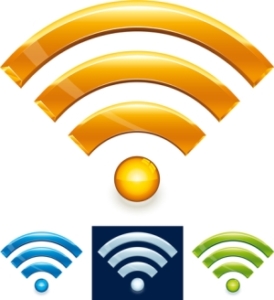How to Prevent your Devices From Spying on You
You might not realize it, but your electronic devices may be tracking you. They know what you are doing, what you are reading, and the things you like to do. In almost every case, you give these devices permission to collect this info when you start using them. Here are some tips to help you prevent your devices from spying on you:
 Laptops
Laptops
Macs
If you are using a macOS computer, you can limit the information you are sending to Apple by choosing the Apple menu > System Preferences > Security & Privacy. Click the “Privacy” tab, and then you will see options about what apps can use and share data. If you click “Analytics,” you can do even more. Also, keep in mind that if you install a new app, you have to do those updates, too.
Windows
If you use Windows, you can limit the info you share by going to “Settings,” and then clicking on “Privacy.” You can enable and disable settings for each app. Again, any new apps that you install must be taken care of separately.
Chromebook
Google collects a ton of data, so Chromebook users should pay attention. Got to My Activity, and then delete what you want. You can also turn off some of the data collecting by clicking “Manage your Google Activity,” and then “Go to Activity Controls.”
Phones
You can do similar things to stop data collecting on your phone, too.
iOS
If you have an iPhone, there is a Privacy setting in the Settings menu. Open it, and then click on “Analytics,” to see what you share with Apple. If you don’t want to share this, simply toggle it all off. You can go back to “Privacy,” and then take a look at what the settings are for every app you have downloaded to your phone.
Android
If you have an Android phone, you can choose Google, then go to “Personal Info & Privacy.” Choose the “Activity Controls” screen, and then pick and choose what you want to share. Again, you have to also go to change settings for each app, too.
Fitness Trackers
Your fitness tracker is also spying on you. Apps like Strava and FitBit can be controlled through the Settings and Privacy options on your phone. You can do more, though:
Strava
Click on “Menu,” if you have Android or “More,” if you have iOS. Choose “Settings,” and then “Privacy Controls.”
FitBit
With FitBit, tap your profile, and then your account name. Tap “Personal Stats,” and then “Settings” followed by “Privacy.”
ROBERT SICILIANO CSP, is a #1 Best Selling Amazon author, CEO of CreditParent.com, the architect of the CSI Protection certification; a Cyber Social and Identity Protection security awareness training program.

 Let’s imagine that you are in a local coffee shop with your laptop. All someone has to do is download a wireless network analyzer, which usually has a free trial, and with the right hardware and additional software they can often see what everyone is viewing online…unless they are protected. In some cases they can also read your emails that are going out and received, as well as texts you might be sending. Scary, right?
Let’s imagine that you are in a local coffee shop with your laptop. All someone has to do is download a wireless network analyzer, which usually has a free trial, and with the right hardware and additional software they can often see what everyone is viewing online…unless they are protected. In some cases they can also read your emails that are going out and received, as well as texts you might be sending. Scary, right?


























